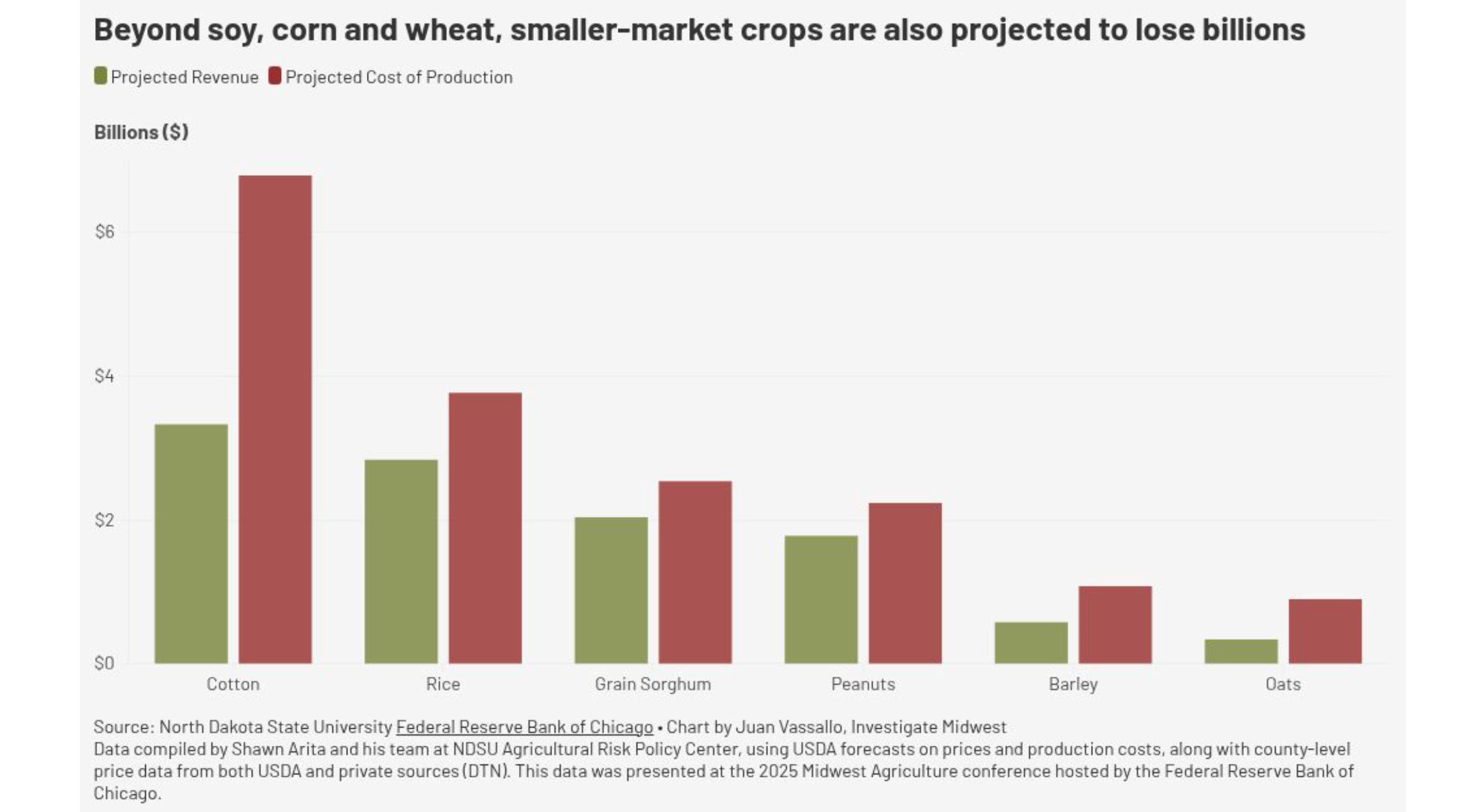
By:Juan Vassallo-
Soybeans sit in storage, farm bankruptcies are rising, and total farm debt continues to climb. By nearly every measure, American farmers are struggling.
Experts say financial pressures are expected to continue mounting.
Due to rising costs, low crop prices and the effects of the trade war, economists project that growers could see roughly $44 billion in net cash income losses from their 2025–26 crops.
At a September conference on agriculture and trade uncertainty hosted by the Federal Reserve Bank, Shawn Arita, professor at North Dakota State University and former senior economist with the USDA, presented projections showing losses across nine major crops.

With production costs far outpacing revenue, Arita and his team at the NDSU Agricultural Risk Policy Center estimate losses of about $20 billion for corn, $10 billion for soybeans and $8.5 billion for wheat — with peanuts, cotton, barley, oats, grain sorghum and rice adding another $6 billion combined.
Since 2023, U.S. farmers have struggled with high input costs and weak commodity prices, a squeeze economists attribute partly to the Russia-Ukraine war.
But this squeeze is made worse by the loss of key export markets — particularly China.
“The tariffs are creating challenges, but it’s not fair to say they are the main culprit,” Arita said. “Certainly, they are exacerbating the issue.”
Arita also noted that the crop sector tends to follow trade cycles more closely than inflation trends. “[China is] not going to start buying soybeans until they get something out of these negotiations,” he said during his presentation.

Still, the main problem remains high costs across the board — tractors, machinery, fertilizers and other inputs, many of which are imported. Although it’s too early to determine whether President Trump’s tariffs will have an effect on these prices, Arita said it’s “simple economics”: higher taxes on these products inevitably lead to higher production costs.
While some farmers are expected to receive financial assistance through the Big Beautiful Bill, that support isn’t set to arrive until October 2026.
This article first appeared on Investigate Midwest and is republished here under a Creative Commons Attribution-NoDerivatives 4.0 International License.








